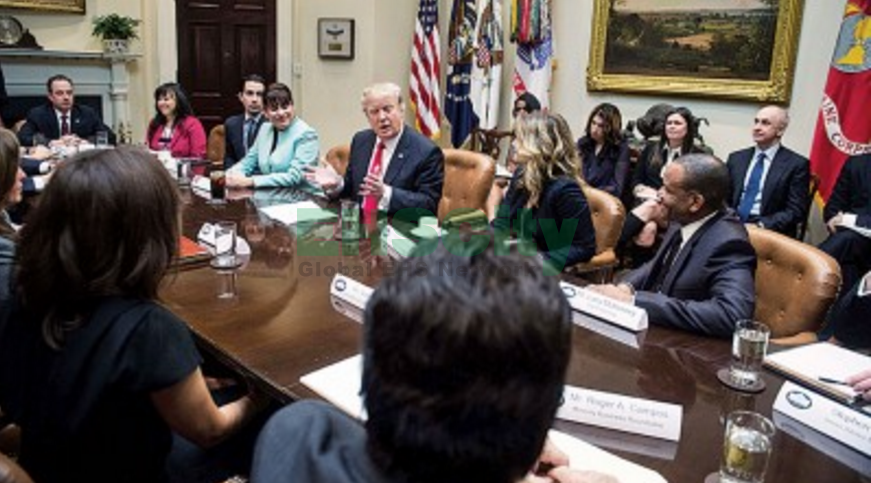Trump’s victory in Tuesday’s Presidential election has conventional wisdom predicting that his administration will defang the Occupational Safety and Health Administration (OSHA) in several ways. One, by ending or curtailing the agency’s current policy of pushing aggressive enforcement against employers and replacing it with a business-friendly objective emphasizing voluntary compliance. Two, by withdrawing or repealing costly or controversial new regulations, such as the agency’s new silica ruleor its new “anti-retaliation” regulations that seek to effectively prohibit mandatory post-accident drug testing and safety incentive programs.
Will all that happen? No one knows right now.
Trump is a first-time office holder with no track record. How exactly he intends to govern is really only known to Trump himself, his family, and a handful of his insiders. With regard to OSHA issues, he may not know himself what he will do. Speculation abounds about whom he would name as Secretary of Labor. Wisconsin Governor Scott Walker’s name frequently comes up; so does Victoria Lipnic, Commissioner of the Equal Employment Opportunity Commission (EEOC). Trump’s transition team is currently tight-lipped about whom they are vetting for the position. Whoever Trump names as Secretary of Labor and Assistant Secretary of Labor for Occupational Safety and Health (i.e., the top official at OSHA) will ultimately reveal the agenda his administration has in mind for OSHA.
What May Be in Store? Less Regulation
On the campaign trail, Trump spent little time detailing his philosophy about workplace safety. But it is unlikely he will leave OSHA alone. During the campaign, Trump often decried in broad brush strokes a culture of over-regulation during the Obama administration, and vowed to kill “wasteful and unnecessary regulation which kills jobs.” If he keeps to his pledge, expect to see efforts to curtail or withdraw recent regulations, such as OSHA’s controversial new silica regulation, which goes into effect for the construction industry in June of 2017 and for general industry in 2018. But regulation-killing has its challenges.
No one, including the President, can instantly nullify a regulation. Trump can order OSHA to implement a Notice of Proposed Rulemaking to amend or withdraw OSHA regulations, but the process often takes years. Career officials within OSHA know the rulemaking game well, and could bog down and delay efforts to dismantle those regulations they view as their legacy.
Initiating rulemaking also does not comport with Trump’s showman style. There’s no grandeur in plodding through proposed rules, preliminary economic analyses, and Small Business Regulatory Enforcement Fairness Act panels. Hastily rushing through rulemaking without dotting the “i”s and crossing the “t”s increases the risk of a successful legal challenge. That’s not to say Trump won’t initiate rulemaking to curb or eliminate OSHA regulations, but its pace may test his patience.
Interpretation Giveth, and Interpretation Taketh Away
Perhaps the most effective shortcut for the achievement of Trump’s agenda for OSHA is to issue letters of interpretation that curtail the scope of many regulations and OSHA procedures. For example, OSHA’s new electronic recordkeeping rule contains provisions requiring “reasonable” procedures that do not discourage employees from reporting injuries and that do not discriminate against employees reporting injuries. In the preamble of this rule, OSHA “interpreted” these vague regulations to effectively prohibit mandatory post-accident drug testing and several popular safety incentive programs. Trump’s new OSHA could issue a new letter of interpretation taking a 180-degree turn on these views. Unions and others may still challenge these actions, but courts have historically deferred to an agency’s interpretation of its own regulations. The immediate effect of a letter of interpretation would be to prevent OSHA from issuing citations to businesses that have the types of policies that the current Obama administration disfavors.
No More Obsession With Recordkeeping
Expect a de-emphasis on recordkeeping under the new OSHA. This is not to say the new electronic recordkeeping regulation goes away; but rather, expect no further developments in this area. In the past eight years, the top two officials at OSHA—Assistant Secretary David Michaels and Deputy Assistant Secretary Jordan Barab—consumed themselves with this topic. Convinced that the regulated community was engaged in widespread underreporting, they set recordkeeping near the top of OSHA's priorities. Michaels’ and Barab’s successors—whoever they are—are likely to move recordkeeping down OSHA’s priority list.
A Shift Away from Enforcement
Trump’s new OSHA would likely put the Severe Violator Enforcement Program (SVEP) on the chopping block. SVEP is OSHA’s “bad actors” list, but business has decried the program as unfair and , regardless of a company’s efforts. Expect Trump to promote the agency’s Voluntary Protection Program (VPP), as former president George W. Bush did during his term. The current administration defunded VPP and placed numerous conditions on applicants, such as prohibiting safety incentive programs, to deter use of the program.
The Power of the Purse String
Trump could also take a cue from Ronald Reagan and cut OSHA’s enforcement budget. With both the House and Senate under Republican control, Congress could also pass appropriations riders to limit OSHA’s ability to enforce disfavored regulations, which President-elect Trump would presumably be more than happy to sign into law.
But Can Trump Afford to Rein in OSHA Too Much?
Pulling back the agency too much, however, might prove problematic for Trump. After all, he directly appealed to and won strong support from Rust Belt blue-collar union members on a pro-jobs, anti-trade platform interpreted as pro-employee. Several unions recently announced that they wish to work with Trump given his pro-employee message. But at the same time, they warn him not to deviate from union values in which OSHA plays a large part. If Trump wishes to avoid early alienation of some his strongest supporters, he will need to tread carefully when it comes to neutering OSHA—either from a regulatory or enforcement standpoint.
What to Watch For in January
When Trump nominates his Secretary of Labor and his Assistant Secretary of Labor for Occupational Safety and Health, expect their Senate confirmations to clarify the Trump administration’s intent for OSHA.

